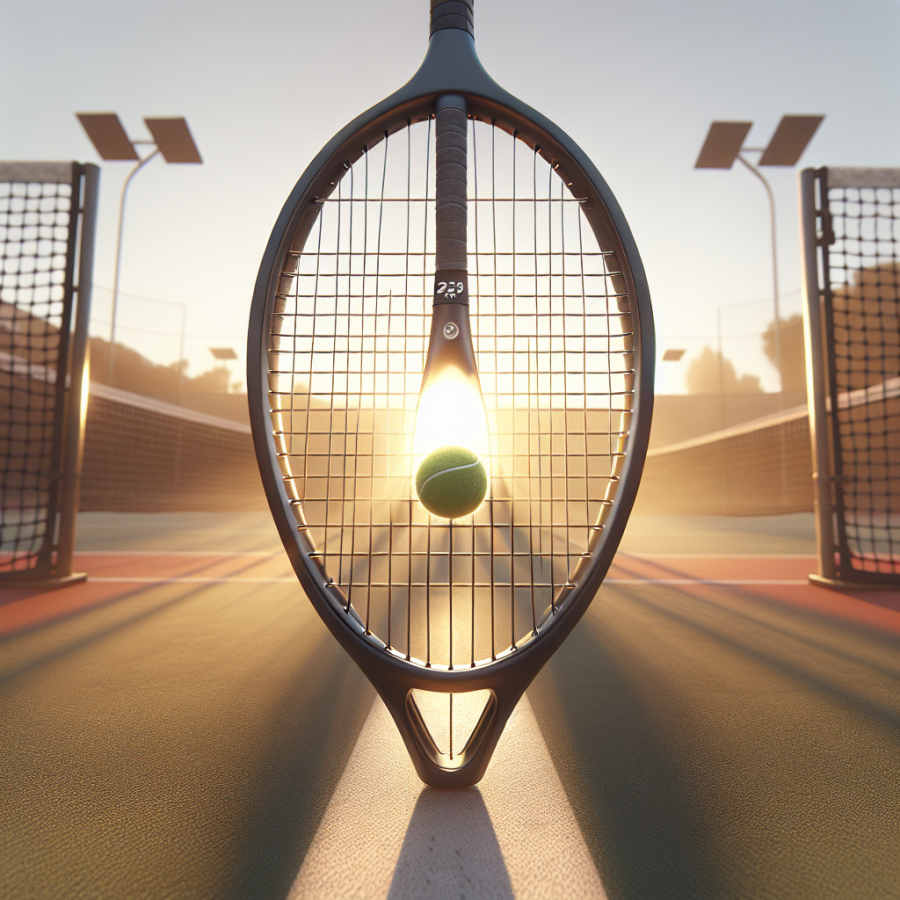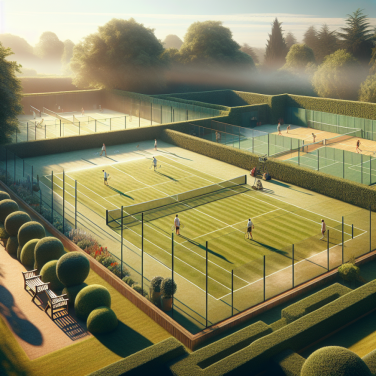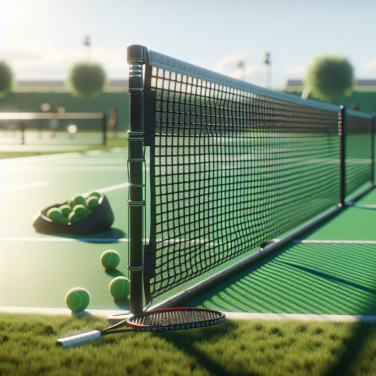Maximizing Your Performance with 23-Inch Tennis Rackets
Selecting the perfect racket is pivotal for any tennis player seeking to hone their game. A 23-inch tennis racket is often the go-to choice for juniors transitioning from being beginners to intermediate players or for those looking for a balance between control and maneuverability.
Understanding the Benefits of a 23-Inch Racket
The distinct advantage of a 23-inch tennis racket lies in its size. It's large enough for young players to grow with but not so big that it becomes unwieldy. An important aspect of maximizing your game with this size racket is grasping its benefits:
- Improved Control: The smaller frame allows for better hand-eye coordination, enabling players to place their shots more accurately.
- Enhanced Maneuverability: A shorter racket is easier to swing. This can help players react quickly to opponents' shots and develop faster stroke speeds.
Choosing the Right Material Composition
Rackets are crafted from a variety of materials, and each has its pros and cons:
- Graphite: Lightweight and powerful, graphite rackets can help players produce more speed and power.
- Aluminum: This is more affordable and durable but usually offers less power than graphite.
- Composite: A mix of materials that often includes graphite, composite rackets offer a balance between power and control.
Grip Size and Comfort
Ensuring that the racket feels comfortable in hand is essential. A grip that's too large or too small can lead to poor racket control and could potentially cause injury. Players should try different grip sizes before making their choice.
String Pattern and Tension
The string pattern is tied directly to the racket's power and control. A more open string pattern tends to provide more power while a denser pattern can offer better control. Tension also plays a key role:
- Higher Tension: Provides more control and precision.
- Lower Tension: Creates more power and a trampoline-like effect, which can be beneficial for players needing extra boost on their shots.
Balancing Weight and Balance Point
The static weight of the racket along with the balance point can alter the feel and performance:
- Head-Heavy Rackets: These have added weight in the head and can offer more power on groundstrokes while requiring more effort on serves and volleys.
- Head-Light Rackets: Easier to handle and preferable for volleys and serves, offering better control at the cost of some power loss.
Read also:
Mastering the Serve: Essential Techniques for Tennis Dominance
Understanding the Benefits of a 23-Inch Tennis Racket
Understanding the Benefits of a 23-Inch Tennis Racket
A 23-inch tennis racket can be a game-changer for certain players, especially for children between 6 and 8 years old or for adults seeking a very lightweight option for casual play. This size is carefully designed to bridge the gap between junior and full-size rackets, offering a blend of control, maneuverability, and power that can greatly benefit the skill development in junior players. For players within the appropriate age or skill range, using a 23-inch racket has numerous advantages that can help maximize their performance on the court.
One of the primary benefits of a 23-inch tennis racket is its manageability. The shorter length makes it easier for players, particularly children, to handle and swing the racket. This promotes proper stroke development as young players can focus on technique without being overwhelmed by the weight and size of an adult racket. With a smaller grip size to match, kids can achieve a correct hold, enhancing their ability to learn and execute different strokes.
Improved coordination is another advantage of this racket size. A compact frame allows for quicker responses, which is beneficial for developing the hand-eye coordination necessary for tennis. The lightweight nature of a 23-inch racket also reduces the risk of injury as it puts less stress on the young player's arm, preventing overuse issues that can arise from swinging heavier rackets.
Additionally, 23-inch tennis rackets are typically designed to be more forgiving, with a larger sweet spot than might be found on more advanced rackets. This is invaluable for children who are still perfecting their accuracy, as it enables them to hit more effective shots even when their strokes aren't perfectly aligned. This increases their confidence and enjoyment of the game, encouraging continued practice and improvement.
For players who have matured beyond the 23-inch tennis racket, transitioning to a larger frame is a natural progression. However, the lessons and skills developed with this size can provide a solid foundation. A player who starts with a racket that complements their physique and ability is more likely to develop correct technique and a love for the sport. As they grow, the time spent with a 23-inch racket will have instilled a sense of timing, control, and an understanding of the game that larger rackets can build upon.
The 23-inch tennis racket is not just for kids; it can also serve as a great tool for situation-specific drills for more experienced players.
Selecting the Perfect 23-Inch Tennis Racket for Your Playing Style
When selecting the perfect 23-inch tennis racket for your playing style, it's essential to understand the nuances of your game and how a racket can complement or enhance your performance on the court. A 23-inch tennis racket is typically aimed at juniors aged 7 to 8, but the principles of choosing the right racket apply to players of all ages.
**Grip Size**: One of the most critical aspects of selecting a tennis racket is ensuring that the grip size matches the player’s hand size. A grip that's too large can lead to a loss of racket control, while one that’s too small can cause the racket to twist in the player's hand, resulting in a lack of precision and increased risk of tennis elbow. To find the perfect grip, measure from the middle crease in your palm to the tip of your ring finger. This measurement should correspond to the grip size of the racket.
**Weight and Balance**: A lighter racket will be easier to maneuver, especially for young players who might not have developed full upper body strength. However, a racket should not be so light that it sacrifices power. The balance of the racket (whether it is head-heavy, head-light, or evenly balanced) can significantly influence swing weight and stability. Those with a natural power game might prefer a head-light racket for better swing speed, while players who generate less power themselves could benefit from a head-heavy racket to add more punch behind their shots.
**String Tension and Pattern**: The tension of the strings on your racket can impact both power and control. A lower tension typically increases power by providing a trampoline effect, while higher tension offers more precise control. The string pattern (open or dense) will also affect the game: open patterns provide more power and spin potential, whereas dense patterns offer control and durability. Choose a racket and string combination that complements your tendency to play a power game or a control-oriented game.
**Frame Stiffness**: The stiffness of the racket frame determines how much power is transferred to the ball upon impact. A stiffer frame will generally provide more power, but at the cost of increased vibration, which can be a concern for players with arm discomfort or injuries. A more flexible frame will absorb some of the shocks and reduce impact stress but may decrease the power of your shots.
**Head Size**: The size of the racket head influences the size of the sweet spot—the area on the racket's string bed that offers the best combination of feel and power.




